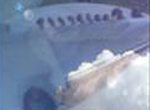![Show/hide content [x]](themes/dragonfly/images/minus.png) Menu Principale
![Show/hide content [x]](themes/dragonfly/images/minus.png) Info Utente
![Show/hide content [x]](themes/dragonfly/images/minus.png) Floating Sarod
![Show/hide content [x]](themes/dragonfly/images/minus.png) Discografia
![Show/hide content [x]](themes/dragonfly/images/minus.png) Visite 40161572pagine viste dal 1 Settembre 2007
|
Confessions of a PCB Designer — Tetris Placement
| Autore |
Messaggio |
xysoom


Registrato: Mag 15, 2020
Messaggi: 1676
|
 Oggetto: Confessions of a PCB Designer — Tetris Placement Oggetto: Confessions of a PCB Designer — Tetris Placement
Inviato: 13-01-2021 11:00:29 |
 |
Confessions of a PCB Designer — Tetris Placement
We’ve covered both sides of the board with parts and even plated the edges. Now what? Smaller parts? The bypass caps under the devices are so small that I can “see” them better with my fingertip than with my eyes. These little braille bumps could just as easily (or almost as easily) be placed on an inner layer of the board.To get more news about Cavity PCB, you can visit pcbmake official website.
If the approach taken is to simply squash the components closer together foregoing things like silkscreen, solder-mask, machine placement, rework, thermal dissipation, isolation, and so on, then the worst thing that could happen is a design win. You won’t be in business for long if it costs you more money to ship and support products than people will pay for those products.
Cutting corners on design rules will do that for you. First pass assembly yields and warrantee performance both rely on clean placement. Knowing that Electrical Engineers would cut those corners is why we have Designers in the first place. Electrical Designers provide the team with options that lead to black ink.
It seems inevitable that there will be one huge inductor that violates the headroom limit. Slotting out a few layers of the PCB will create a recess that could buy you that crucial half-millimeter in the Z-stack. It’s not truly embedded into the PCB but uses the same technology. Chips go into die cavities on substrates all the time.
Note that these preliminary views didn’t have enough copper pull-back from the cavity edge (thin red) to create the seal-ring on the target layer that makes up the inductor’s footprint. I had to go with via-in-pad and route the connecting shapes on the layer below. As usual, the primary component layer is the bottom. The physical design team ends up having the board face-down on nearly every phone, tablet, or laptop that I’ve ever seen. So, in this case, layer 3 gives me the depth that includes the core 3–4 dielectric where most of the thickness of this six-layer board lies.
If we took the additional steps of populating the cavity during fabrication, filling the remaining air-space in the slot with resin, and then doing further lamination processes so that the component disappears from the face of the board, we would have embedded components.
|
|
| Torna in cima |
|
 |
|
Non puoi inserire nuovi Topic in questo forum
Non puoi rispondere ai Topic in questo forum
Non puoi modificare i tuoi messaggi in questo forum
Non puoi cancellare i tuoi messaggi in questo forum
Non puoi votare nei sondaggi in questo forum
Non puoi allegare file in questo forum
Non puoi scaricare il file da questo forum
|
|
![Show/hide content [x]](themes/dragonfly/images/minus.png) Menu Principale
Menu Principale HOME
HOME NADA YOGA
NADA YOGA AMBIENTI SONORI
AMBIENTI SONORI VISUAL SOUND
VISUAL SOUND MUSICA LIVE
MUSICA LIVE INDIAN MUSIC
INDIAN MUSIC UTILITA'
UTILITA' AREA RISERVATA
AREA RISERVATA![Show/hide content [x]](themes/dragonfly/images/minus.png) Info Utente
Info Utente![Show/hide content [x]](themes/dragonfly/images/minus.png) Floating Sarod
Floating Sarod![Show/hide content [x]](themes/dragonfly/images/minus.png) Discografia
Discografia![Show/hide content [x]](themes/dragonfly/images/minus.png)
![Show/hide content [x]](themes/dragonfly/images/minus.png) Visite
Visite






